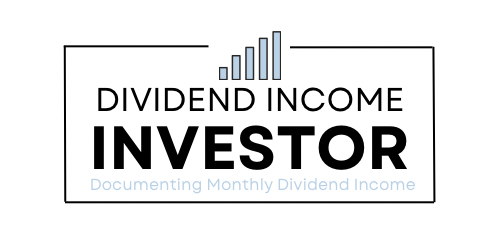How to manage bank accounts: How many bank accounts you need, and tips on how to manage multiple bank accounts. Easily organize bank accounts. | This posts contains affiliate links and ads by Monumetric.
One of the keys to reaching financial independence is proper money management.
Simply put, if you can not manage your cash flow, you will never have any money to save for investing.
And in order to manage cash flow properly, you must know how to manage your bank accounts the right way.
By the end of this post, you will know how many bank accounts you need and you will understand how to manage bank accounts like an expert.
Let’s get started.
How to Manage Bank Accounts

How many bank accounts should you have?
At the very least, you should have two bank accounts and one investment account.
Based on my experience working as an over-the-phone banking specialist, I believe everyone should have one chequing account, one savings account, and at least one investment account for retirement.
The chequing account is intended for bill payments and purchases, and the savings account is there for emergency savings. Meanwhile, the investment account is money that you will not touch until you retire.
When you are beginning to manage bank accounts, I would recommend that you keep it simple.
Here are my 7 tips on how to manage bank accounts:
1. Use Chequing/Checking Accounts for Bill Payments and Purchases ONLY
I can not stress this point enough.
Chequing/checking accounts are for purchases and bill payments only.
They are not for saving money because they do not pay interest. And savings accounts are not to be used as chequing/checking accounts because they have fees.
So, the first tip is to use your chequing account for transactions.
Only keep money in your chequing account that is intended for spending, for pre-authorized payments, or to cover extra expenses that will occur before your next payday.
2. Have an Accessible Savings Account for Emergencies
To be prepared for larger or unexpected expenses, you should have an emergency fund.
Since an emergency fund needs to be accessible, a great option is a high interest savings account.
If there is an emergency, you can easily transfer money into your chequing account using a mobile banking app. It can easily be accessed and the money earns interest while it sits in the account.
To build up an emergency fund, pay yourself first a small percentage of your income.
Once the funds are in the emergency fund, pretend they do not exist unless there is an emergency.
Ideally, an emergency fund should be three to six months’ worth of expenses.
Emergency funds also help you avoid going into debt or withdrawing from retirement savings.
3. Set Up Multiple Short-Term Savings Account for Specific Purchases
Keeping your bank accounts simple is the best course of action at first.
But once you build up a solid emergency fund, you can begin to make it slightly more complex.
For example, if you have extra cash flow, you could open a second savings account to save for a down payment on a house.
Alternatively, you could open a second or third savings account to save for trips and larger purchases.
Although it does make managing your finances more complicated, it’s nice to keep the money separate and for specific purposes.
Plus, it’s kind of messy to keep your emergency, house, and trip savings altogether. I find it more motivating to see the individual accounts grow separately.
For additional accounts, I prefer high interest savings accounts.
4. Open an Investment Account to Save for Retirement
Ok, an investment account isn’t exactly a bank account. But investing for your retirement should be part of your financial plan.
So, open at least one investment account to save and invest for your retirement.
Talk to your accountant to find out what is the best type of account for you.
Then pay yourself first a portion of your income that you will not withdraw until retirement.
Invest regularly.
5. Consider Deposit Insurance (CDIC)
If you have a lot of money, you will have to consider deposit insurance.
In short, deposit insurance means your money is insured if the bank goes bankrupt.
Most Canadian deposit accounts are insured for up to $100,000 with CDIC.
So, if you have more than $100,000 in a chequing or savings account, you may want to move some of it to another bank.
6. If You Own a Business, Open a Separate Business Account
If you own a business, you need to have a separate business account for business expenses and income.
It will be too confusing if you try to run all your personal and business finances through the same account.
Even if you run a small blog that is hardly making money at all, it’s still best to have a separate business account.
Related: How to Manage Your Blog Finances (Professionally)
7. You Only Need One Credit Card
Although some financial gurus like Dave Ramsey are against credit cards, I still think they play a key role in managing your bank accounts.
If you are able to pay your credit card off every single month, it is a great way to earn rewards points for travel or purchases.
However, just remember to keep it under control and pay it off every month. And you only need one credit card. I will never understand why people want to overcomplicate things and have more than one credit card. One annual fee is enough.
The only scenario that justifies having more than one credit card is if you travel a lot. It could be there for added protection in case one card is blocked or lost.
My Personal Bank Account Management Strategy: 9 Accounts
As a dividend investor and blogger, the way I manage my bank accounts and investment accounts is different.
As of right now, I have 9 accounts. I have two chequing accounts, two savings accounts, one credit card, two TFSAs, one RRSP, and one non-registered investment account.
Each account has a specific purpose:
Chequing account one: Bill payments, purchases, paycheque deposits.
Chequing account two: blog finances.
Savings account one: emergency fund.
Savings account two: house.
Credit card: mostly groceries.
TFSA one: Canadian stocks.
TFSA two: Canadian stocks.
RRSP: USD stocks.
Non-registered investment account: Canadian stocks and cash or cash equivalent investments.

How to Manage Bank Accounts – Final Thoughts
In conclusion, the average person needs at least three bank accounts:
- Chequing/checking
- Savings
- Investment
The chequing account is for bill payments and purchases. The savings account is for emergencies. And the investment account is for retirement.
Although it’s best to keep your bank accounts simple at first, eventually you can have multiple savings accounts to save for specific purchases.
Otherwise, manage according to your financial situation and consistently stick to a budget.
Fund your accounts by paying yourself first, and pre-authorize bill payments to keep things as simple as possible.
Now I’d like to hear from you.
I am always interested in how other people manage their bank accounts and investments.
Let me know if you manage your accounts differently in the comments below.
Thanks for reading!
Related posts that you might like:
How to Budget – 7 Steps to a Successful Budget
Savings Account High Interest: How to Earn Interest With a Savings Account
Pay Yourself First – How to Pay Yourself First
I am not a licensed investment or tax adviser. All opinions are my own. This post may contain advertisements by Monumetric. This post may also contain internal links, affiliate links to BizBudding, Amazon, Bluehost, and Questrade, links to trusted external sites, and links to RTC social media accounts.
Connect with RTC
Twitter: @Reversethecrush
Pinterest: @reversethecrushblog
Instagram: @reversethecrush_
Facebook: @reversethecrushblog
Email: graham@reversethecrush.com


 Investing With Little Money — 6 Easy Steps to Invest in Stocks When You’re Starting From Nothing
Investing With Little Money — 6 Easy Steps to Invest in Stocks When You’re Starting From Nothing
